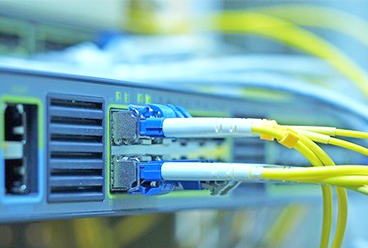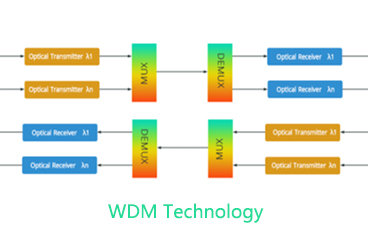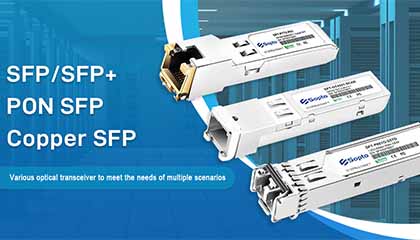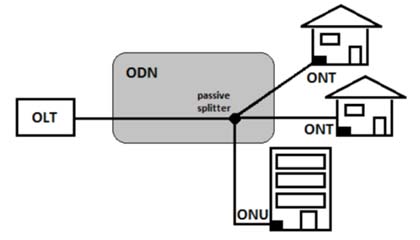The application of PON (Passive Optical Network) technology in CCTV (Closed-Circuit Television) surveillance projects primarily manifests in the following aspects:
1. Network Infrastructure Optimization
PON technology uses optical fiber as the transmission medium and utilizes passive optical splitters to share the bandwidth of a single optical fiber among multiple terminal devices. This approach significantly reduces the amount of fiber cabling needed, simplifies the network structure, and lowers the costs and complexity of cabling.
2. High Bandwidth and Long-Distance Transmission
PON provides high bandwidth, supporting the transmission of high-definition video streams, which is crucial for HD and ultra-HD CCTV surveillance. PON also supports long-distance transmission (up to over 20 kilometers), allowing remote monitoring points to connect to the centralized management system without the need for repeaters.
3. Centralized Management and Simple Maintenance
The centralized management feature of PON networks makes operations and maintenance simpler. All data from CCTV cameras can be aggregated into one or more Optical Network Units (ONUs) and then managed uniformly through the Optical Line Terminal (OLT). This centralized management helps improve the reliability and maintainability of the surveillance system.
4. Energy Savings
Compared to traditional active network equipment, PON networks do not require relays or switches, instead using passive components. This results in lower overall energy consumption, saving energy costs and reducing system maintenance needs.
5. Flexible Scalability
PON networks are highly scalable, allowing for easy addition of new monitoring points. By adding more ONU devices to the existing optical fiber network, new camera connection points can be expanded without the need for complex cabling or installation.
Application Scenarios
1. Building Monitoring
Application Scenarios: High-rise buildings, office buildings, shopping malls, etc.
Features: Buildings usually have multiple floors and numerous monitoring points, such as corridors, elevators, stairwells, and underground parking lots.
Advantages of PON Technology:
Reduce Wiring Complexity: Traditional wiring methods require a large number of network cables between floors. PON uses optical fiber and passive splitters, significantly reducing the amount and complexity of wiring.
Centralized Management: Signals from all cameras can be centrally transmitted to one or more ONUs and then aggregated to the OLT for unified management, facilitating centralized storage and management of monitoring data.
High Bandwidth for HD Monitoring: PON's high bandwidth characteristics support the transmission of video streams from high-definition cameras, ensuring image quality.
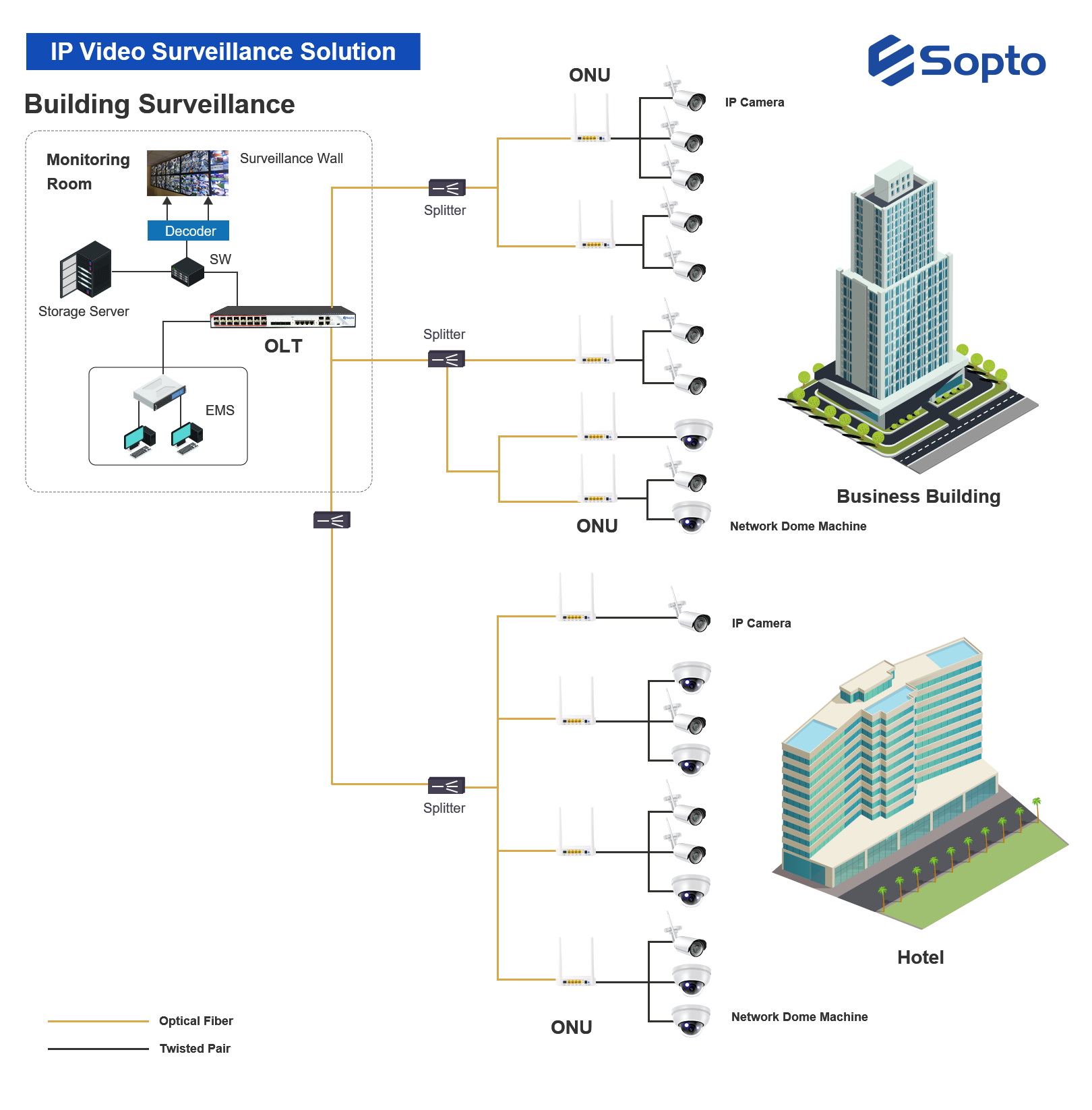
2. Community Monitoring
Application Scenarios: Residential communities, residential areas, apartment buildings, etc.
Features: Communities include multiple monitoring points such as entrances, public areas, parking lots, and green spaces.
Advantages of PON Technology:
Long-Distance Coverage: PON can cover the monitoring needs of the entire community, using optical fiber to connect cameras far from the management center, reducing signal attenuation.
Flexible Scalability: When the community scale expands or new monitoring points need to be added, expansion can be easily achieved by adding ONU devices without relaying a large number of optical fibers.
Cost and Energy Savings: The use of passive network components reduces energy consumption and the complexity of equipment maintenance.
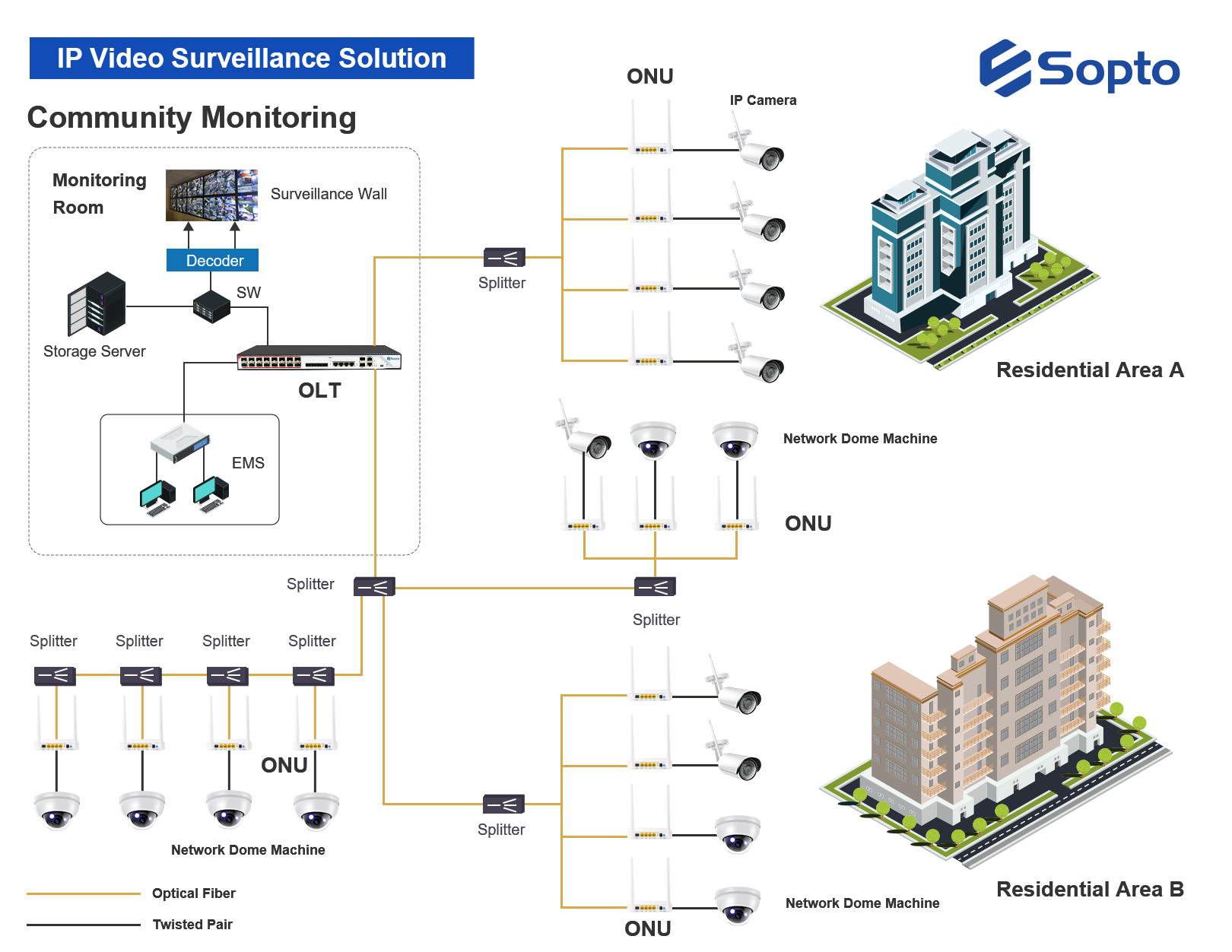
3. Road Monitoring
Application Scenarios: Urban roads, highways, rural roads, etc.
Features: Monitoring points are widely distributed, including intersections, important sections, tunnels, and bridges.
Advantages of PON Technology:
Wide Area Coverage and Long-Distance Transmission: PON's long-distance transmission capability is suitable for covering a wide range of road monitoring points without the need for relay stations or amplifiers.
High Bandwidth for Multi-Channel Video Transmission: PON supports the simultaneous transmission of multi-channel high-definition video signals, making it suitable for complex traffic monitoring needs.
Centralized Management and Low Maintenance: Road monitoring systems typically require remote management, and the centralized management features provided by PON reduce the need for on-site maintenance.
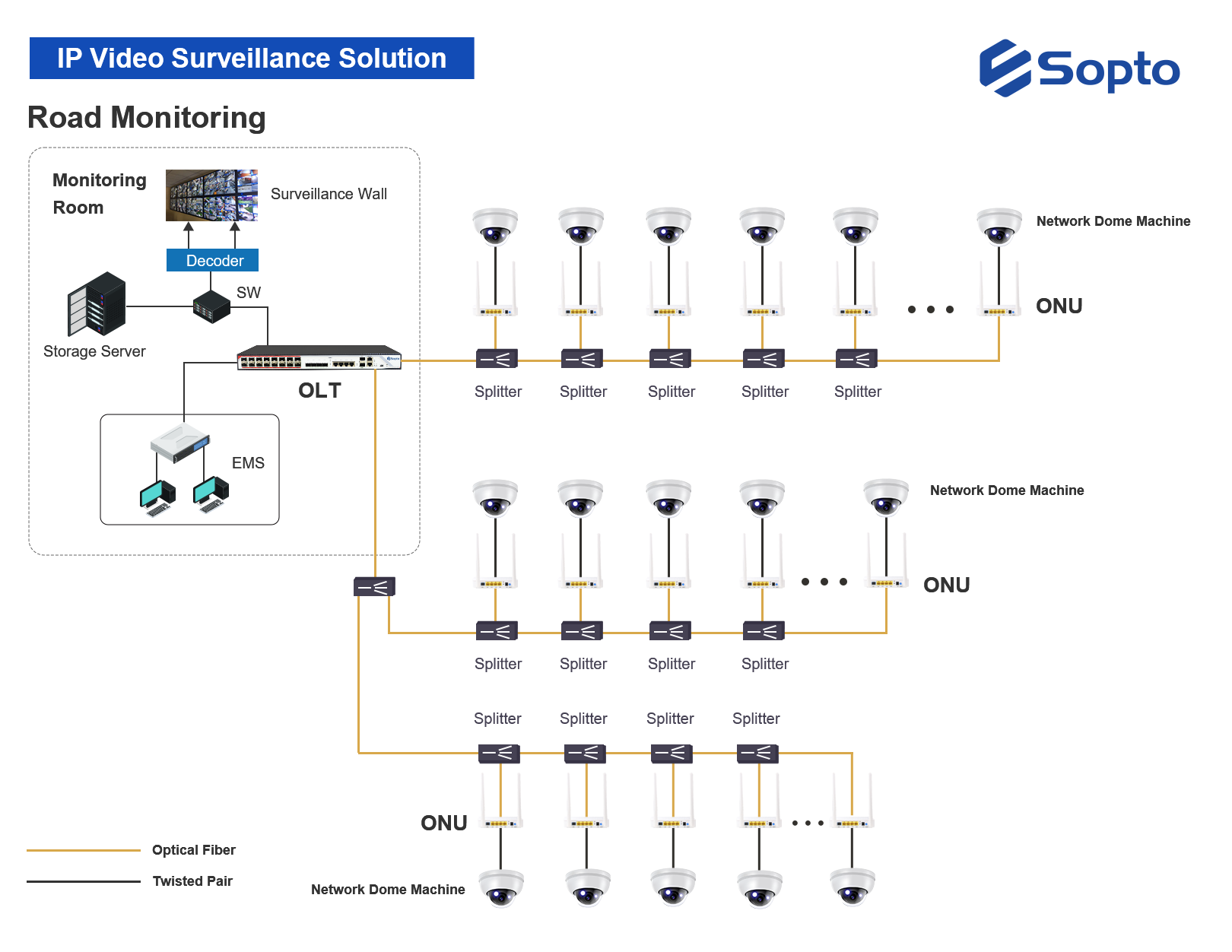
Plan Composition
A typical PON solution in a CCTV project usually includes the following equipment:
OLT (Optical Line Terminal): Responsible for connecting to the backbone network and centrally managing the network.
ONU (Optical Network Unit): Connects individual cameras or camera clusters and uploads video data to the OLT.
Optical Fiber: Used as a transmission medium, connecting the OLT and ONU.
Optical Splitter: Used to distribute optical fiber signals and connect multiple ONUs.
Through PON technology, CCTV projects can achieve efficient network resource utilization, simplified system maintenance, and low-cost expansion capabilities. For more details, please contact us at email: [email protected] or WhatsApp: https://wa.me/+8618688759008.
Tags : CCTV ,PON Technology, Passive Optical Network, CCTV monitoring
— END —




